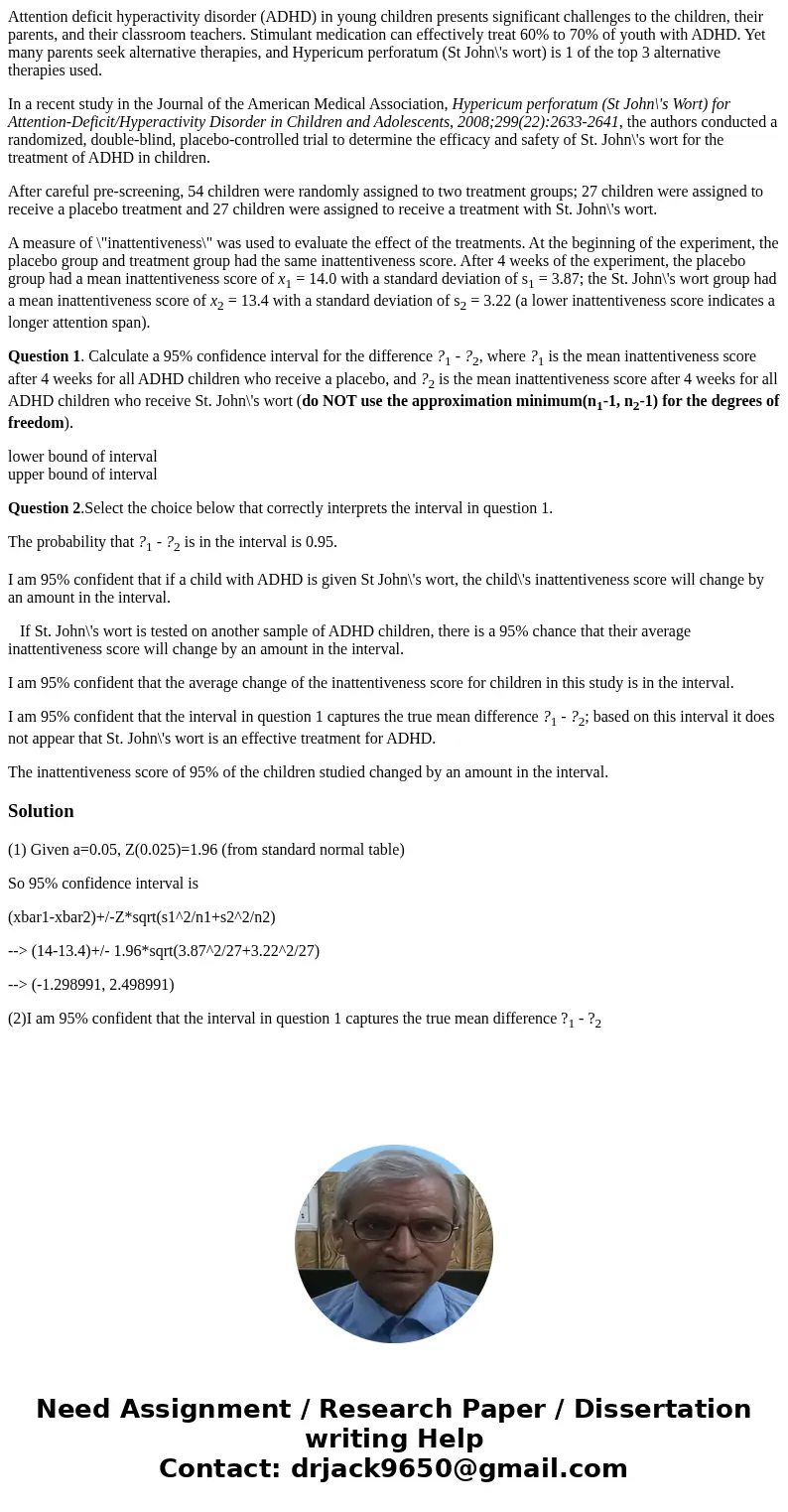Attention deficit hyperactivity disorder ADHD in young child
Attention deficit hyperactivity disorder (ADHD) in young children presents significant challenges to the children, their parents, and their classroom teachers. Stimulant medication can effectively treat 60% to 70% of youth with ADHD. Yet many parents seek alternative therapies, and Hypericum perforatum (St John\'s wort) is 1 of the top 3 alternative therapies used.
In a recent study in the Journal of the American Medical Association, Hypericum perforatum (St John\'s Wort) for Attention-Deficit/Hyperactivity Disorder in Children and Adolescents, 2008;299(22):2633-2641, the authors conducted a randomized, double-blind, placebo-controlled trial to determine the efficacy and safety of St. John\'s wort for the treatment of ADHD in children.
After careful pre-screening, 54 children were randomly assigned to two treatment groups; 27 children were assigned to receive a placebo treatment and 27 children were assigned to receive a treatment with St. John\'s wort.
A measure of \"inattentiveness\" was used to evaluate the effect of the treatments. At the beginning of the experiment, the placebo group and treatment group had the same inattentiveness score. After 4 weeks of the experiment, the placebo group had a mean inattentiveness score of x1 = 14.0 with a standard deviation of s1 = 3.87; the St. John\'s wort group had a mean inattentiveness score of x2 = 13.4 with a standard deviation of s2 = 3.22 (a lower inattentiveness score indicates a longer attention span).
Question 1. Calculate a 95% confidence interval for the difference ?1 - ?2, where ?1 is the mean inattentiveness score after 4 weeks for all ADHD children who receive a placebo, and ?2 is the mean inattentiveness score after 4 weeks for all ADHD children who receive St. John\'s wort (do NOT use the approximation minimum(n1-1, n2-1) for the degrees of freedom).
lower bound of interval
upper bound of interval
Question 2.Select the choice below that correctly interprets the interval in question 1.
The probability that ?1 - ?2 is in the interval is 0.95.
I am 95% confident that if a child with ADHD is given St John\'s wort, the child\'s inattentiveness score will change by an amount in the interval.
If St. John\'s wort is tested on another sample of ADHD children, there is a 95% chance that their average inattentiveness score will change by an amount in the interval.
I am 95% confident that the average change of the inattentiveness score for children in this study is in the interval.
I am 95% confident that the interval in question 1 captures the true mean difference ?1 - ?2; based on this interval it does not appear that St. John\'s wort is an effective treatment for ADHD.
The inattentiveness score of 95% of the children studied changed by an amount in the interval.
Solution
(1) Given a=0.05, Z(0.025)=1.96 (from standard normal table)
So 95% confidence interval is
(xbar1-xbar2)+/-Z*sqrt(s1^2/n1+s2^2/n2)
--> (14-13.4)+/- 1.96*sqrt(3.87^2/27+3.22^2/27)
--> (-1.298991, 2.498991)
(2)I am 95% confident that the interval in question 1 captures the true mean difference ?1 - ?2

 Homework Sourse
Homework Sourse